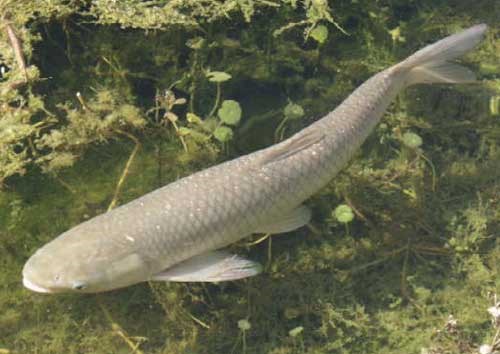The federal government has allocated $20 million to efforts to prevent the spread of the Asian carp in the Great Lakes.
The Department of Fisheries and Oceans says the money will be spent over the next five years to expand prevention efforts through early warning surveillance, partnering and outreach activities.
The Asian carp is among the top aquatic invasive species currently being monitored for their potential establishment in the Great Lakes.
The four carp species (Bighead, Silver, Grass and Black) aggressively compete with native fishes for food and habitat, and can quickly become the dominant population.
Risk assessments conducted by Canadian and American researchers show that the Great Lakes contain enough food and adequate habitat to support the carp's establishment.
Individual Bighead and Grass carp have been captured both in Lake Erie and Lake Huron, including the Huron shoreline east of Sault Ste. Marie.
The recurrence of fertile Grass carp has recently become more common, causing the Great Lakes Fishery Commission to caution last year that the risk of a population becoming firmly established is growing.
However, the immediate threat to Lake Superior is more remote because its habitat is not as suitable for carp as other parts of the Great Lakes.
Grass carp are said to have a voracious appetite, consuming 40 per cent of their body weight in aquatic vegetation in a single day.
Their impact on the natural ecosystem is extreme because of their ability to outcompete for space and food, and their lack of natural predators.
